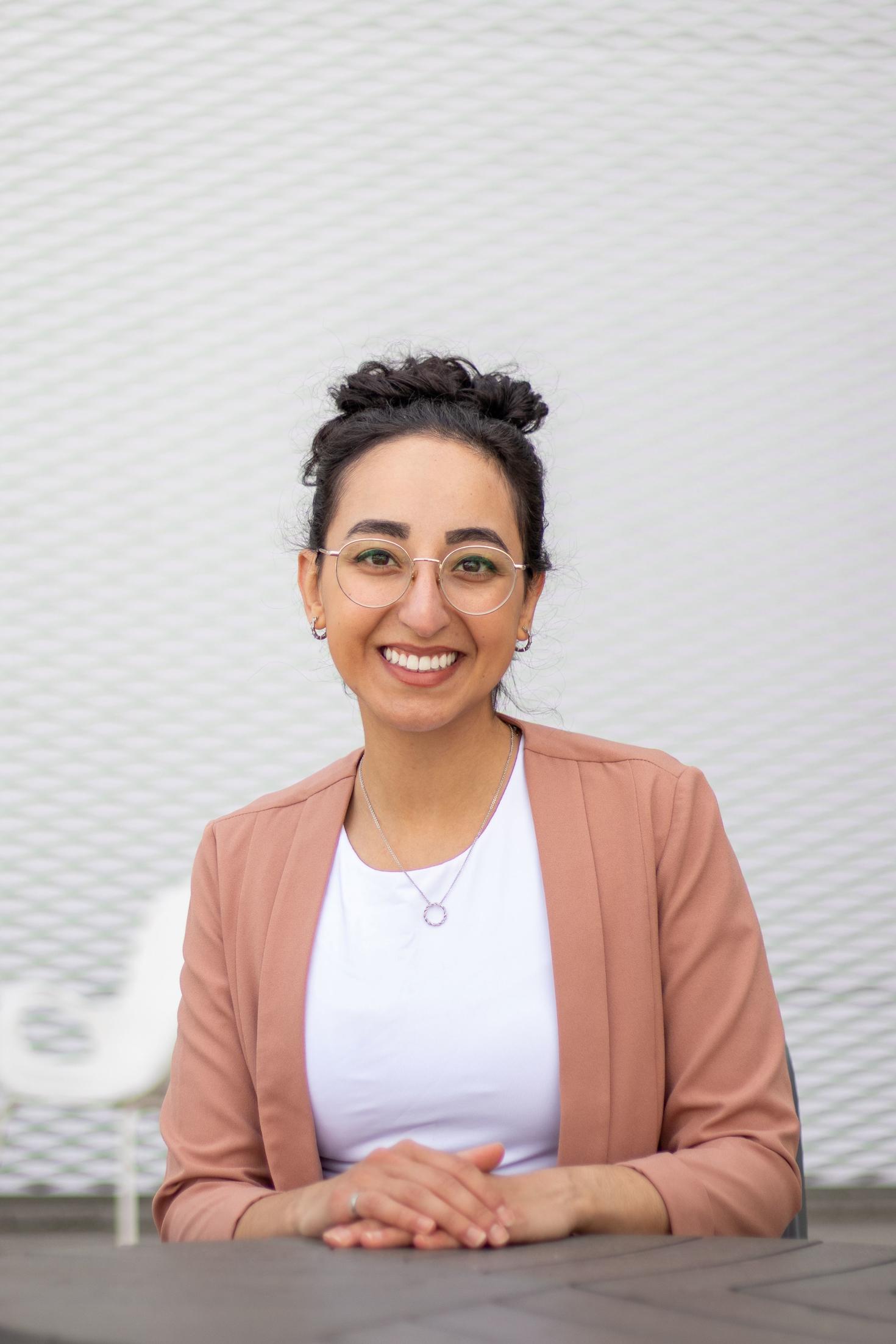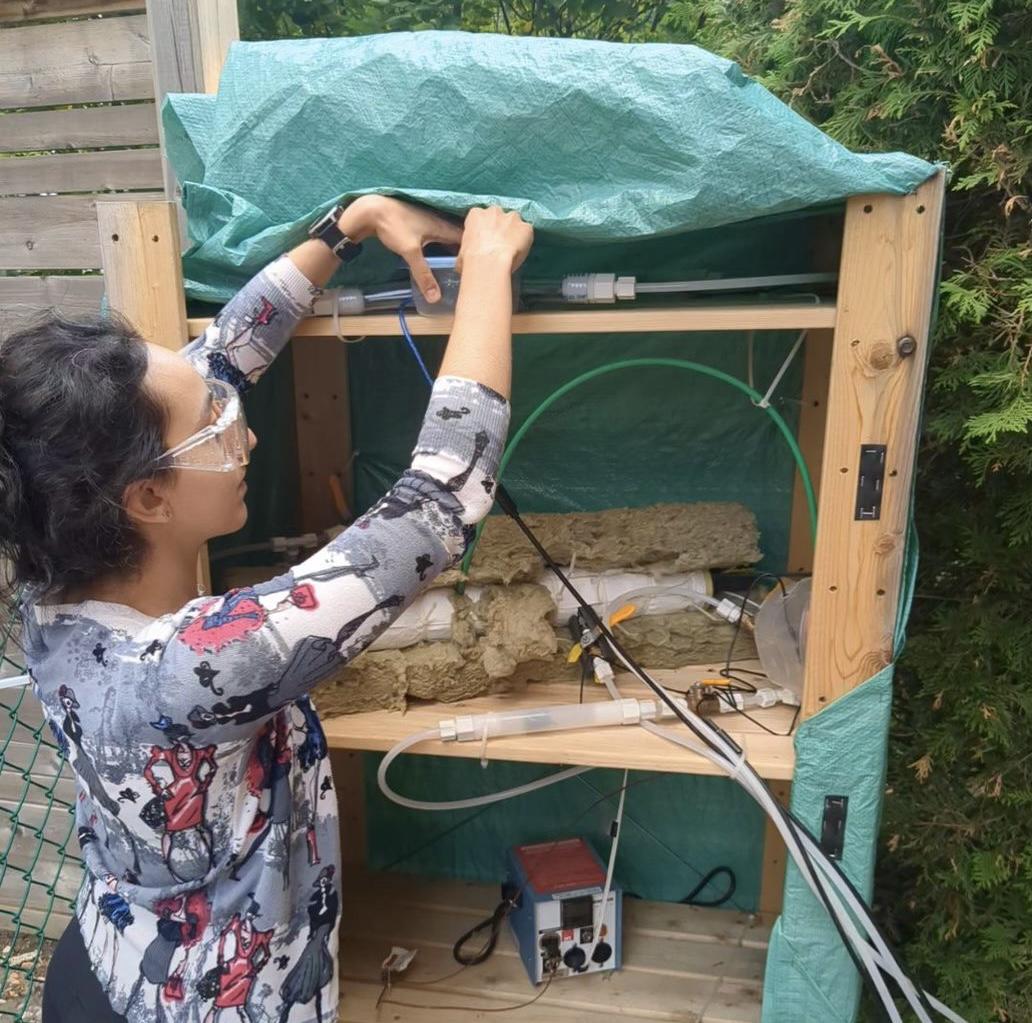Vida Gabriel’s (BASc ’17, PhD ’22) decision to pursue chemical engineering for her postsecondary studies was inspired by her high school chemistry teacher. “My grade 10, 11, 12 chemistry courses were just so interesting to me. It was the first time I really felt enthralled with a subject, like certain things just made sense.”
That passion for chemical engineering and the protection of the environment led her to start a company, TerraFixing, with fellow alumnus Sean Wilson (BASc ’13, MASc ’16, PhD ’20), and develop a direct air carbon capture technology to reduce the impact of climate change.
A natural choice
Wanting to study in French, the University of Ottawa was a natural choice for Vida. In third year, she received a student grant from Women in Engineering to do summer research on polymers. She worked with Dr. Marc Dubé and other graduate students. “I was so fortunate to have landed a position in (his) lab. That summer was the perfect opportunity for me to get a taste of research and I was getting some pretty great results. In fact, the research that I started that summer got published right at the start of my master’s.”
Vida had always wanted to do graduate studies, but this appeared unattainable. “During my undergrad, the prospect of doing a master’s or PhD was something that I wondered if I would even dare to try.” Going through the chemical engineering program in the French stream allowed her to connect with the professors, as classes were much smaller. She ended up starting her master’s and fast tracking to her PhD under Dubé’s supervision.
Joining forces to help solve carbon problems
During her PhD, Vida focused her research on sustainable polymer reaction engineering and eventually on polymer biodegradation. During that time, she crossed paths with Sean Wilson, a PhD candidate specializing in gas adsorption-based gas separations. They became friends through Chemical and Biological Engineering Graduate Student Association (CBGSA) events.
In a conversation with Sean, Vida had a realization: the bio-organisms responsible for plastic degradation were “exhaling” carbon dioxide, meaning that the polymers, though not destined for landfill anymore, were still contributing to atmospheric carbon emissions. She understood that carbon capture from the air would have a more significant long-term benefit for the planet.
Vida decided to join forces with Sean. She had never seriously considered starting a company, but it became obvious that they should. “TerraFixing sucked me in, actually. I didn’t wake up one morning with the decision that ‘I’m going to be entrepreneur.’ Instead, I was seeing opportunities, seeing gaps, and feeling a sense of responsibility to tackle the world’s carbon problems using TerraFixing’s unique technological innovation.”

“...Instead, I was seeing opportunities, seeing gaps, and feeling a sense of responsibility to tackle the world’s carbon problems using TerraFixing’s unique technological innovation.”
Vida Gabriel
— B.Sc.A. 2017, Ph.D. 2022 (chemical engineering)
A unique technology : Direct air carbon capture
Incorporated in 2020, TerraFixing has developed an affordable, scalable technology to combat global warming by capturing carbon dioxide, a major contributor in climate change, from the air. It sequesters it in the earth permanently.
While other direct air carbon capture (DAC) technologies only operate in warm weather, TerraFixing’s can survive and thrive in the cold. It uses zeolites, a supermaterial with a surface area of over 800 m2/g, to attract and remove CO2 from the air. The adsorption performance improves in cold climates, making Canada an ideal location for the process.
What makes DAC technologies unique is that they can target carbon emissions from the past, decoupling the capture step from emission sources. Currently in the scale-up phase, TerraFixing will soon install a larger prototype in Fermont, Quebec, where it has access to renewable power and a sequestration partner familiar with drilling and pumping CO2 underground.
TerraFixing’s unique technology has won it a spot in the Top 60 Milestone finalists for the X-PRIZE, a global competition offering $100 million in prize for companies to create innovative carbon capture solution by 2025. It has also received private investments and pre-sold over $200,000 in carbon removal credits to date, demonstrating a real appetite in the market for its unique DAC solution.

Still connected to the University
Meanwhile, as an alumna, Vida feels like she’s never really left university. She recently participated in a faculty discussion around sustainability with the dean of engineering and other alumni, and she moderated the last uOttawa Innovates event on climate change in May.
